Nutritional Comparison Between Chicken And Lamb
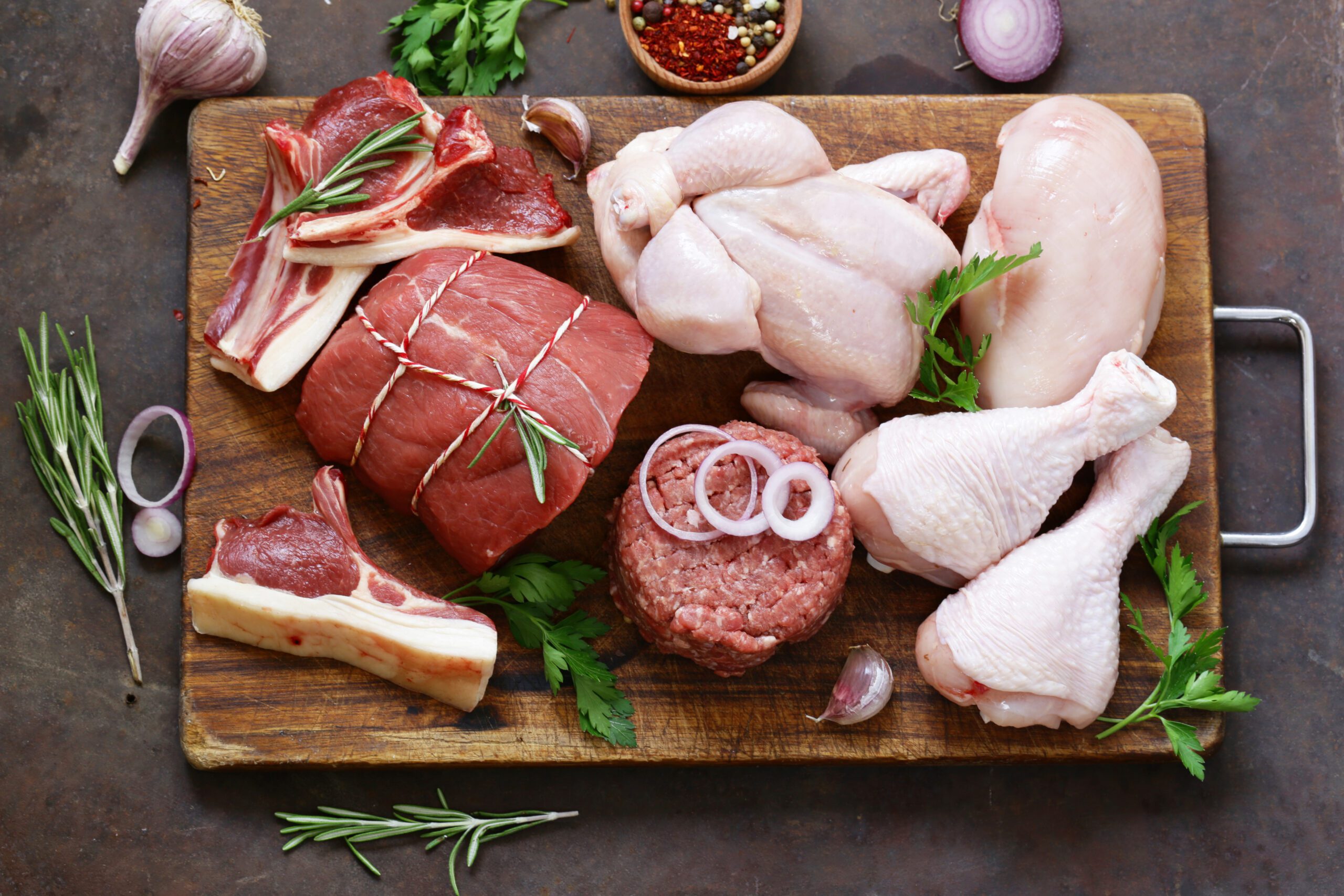
When it comes to comparing the nutritional content of chicken and lamb, there are some key differences to consider. In terms of protein content, both chicken and lamb are excellent sources. However, chicken tends to be leaner and lower in fat, making it a popular choice for those watching their saturated fat intake. Lamb, on the other hand, contains more fat, including saturated fat. Lamb also contains important nutrients such as selenium, zinc, copper, potassium, phosphorus, iron, and vitamins B2, while chicken is richer in vitamins B3, B5, and B6. Overall, the choice between chicken and lamb depends on individual dietary needs and preferences.
Protein Content And Amino Acid Profiles
Chicken and lamb are both excellent sources of protein, with chicken being slightly higher in protein content. Protein is essential for the growth and repair of cells, as well as for the production of enzymes and hormones. When it comes to amino acid profiles, both chicken and lamb provide all the essential amino acids that the body needs. These include histidine, isoleucine, leucine, lysine, methionine, phenylalanine, threonine, tryptophan, and valine. Amino acids are the building blocks of protein and play a crucial role in various bodily functions. It is important to consume a variety of protein sources to ensure an adequate intake of all essential amino acids.
Fat Content And Types Of Fats In Chicken And Lamb
When it comes to fat content, chicken is generally lower in fat compared to lamb. Skinless chicken breast is particularly lean, containing very little fat. On the other hand, lamb can have a higher fat content, especially in cuts that include visible fat or marbling. It is important to note that the type of fat in both chicken and lamb plays a role in their overall health impact. Chicken is known for its lower saturated fat content, which is associated with an increased risk of heart disease. Lamb, however, contains a higher amount of saturated fat, which should be consumed in moderation to maintain heart health.
Health Benefits Of Chicken Consumption
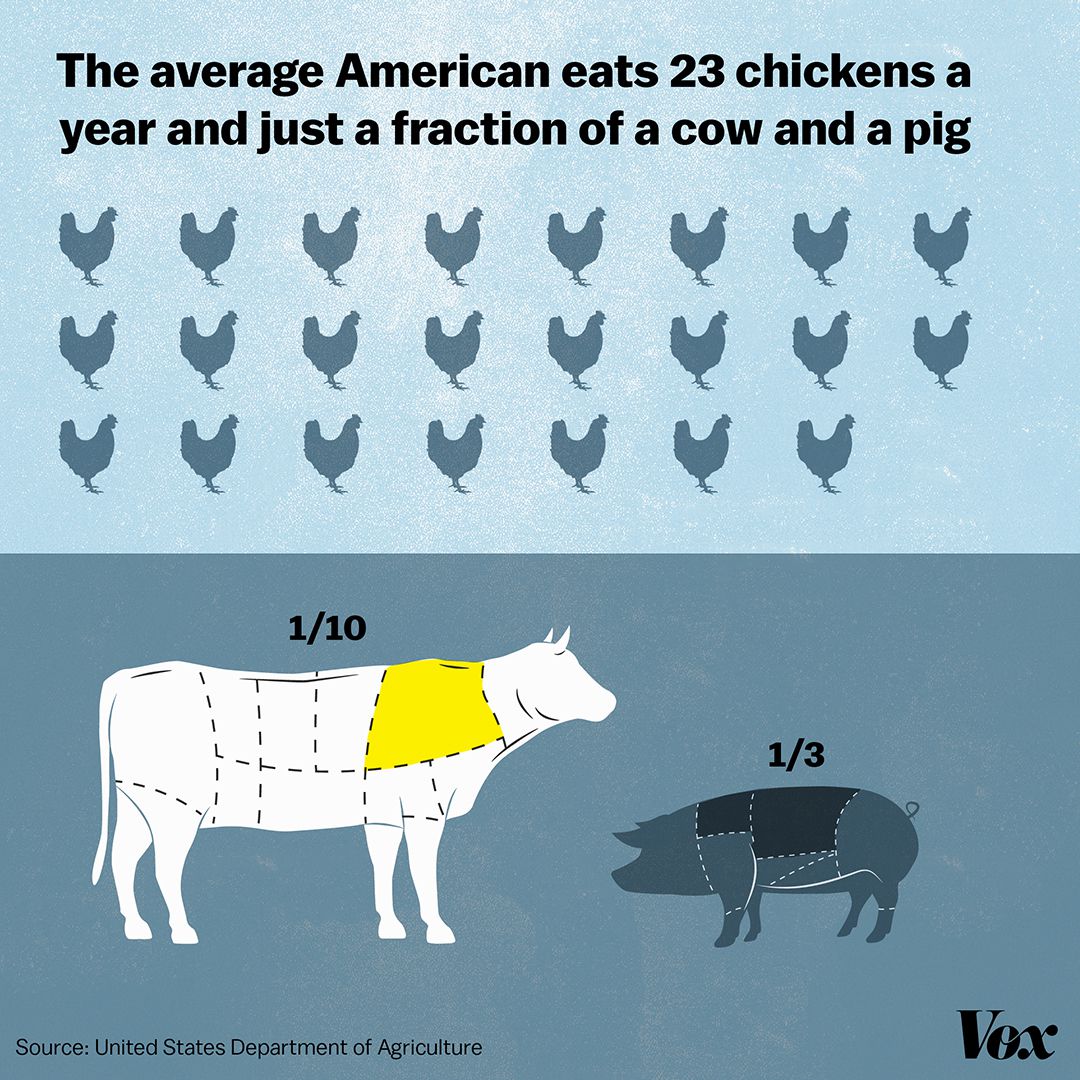
Chicken consumption offers a range of health benefits. Firstly, chicken is a lean source of protein, meaning it provides essential amino acids for muscle repair and growth without excessive fat content. Secondly, compared to lamb, chicken has lower cholesterol levels, making it a heart-healthy choice. Additionally, chicken is packed with vitamins and minerals, such as vitamin B6 and selenium, which support immune function and metabolism. Incorporating chicken into a balanced diet can contribute to overall health and wellbeing. Remember to choose lean cuts and remove the skin for the healthiest option.
Lean Protein Source
Chicken is a great choice for those looking to consume a lean protein source. It provides all the essential amino acids needed for muscle repair and growth, without the excessive fat content found in red meats like lamb. By opting for skinless cuts of chicken, you can further reduce the fat content, making it a healthier choice. Incorporating chicken into your diet can help support your body’s protein needs, while also providing essential nutrients like vitamin B6 and selenium. So, whether you’re looking to build muscle or maintain overall health, chicken is an excellent lean protein source to consider.
Lower Cholesterol Levels Compared To Lamb
When it comes to cholesterol levels, chicken has an advantage over lamb. Chicken is lower in cholesterol compared to lamb, making it a healthier choice for individuals concerned about their heart health. Consuming too much cholesterol can raise blood cholesterol levels and increase the risk of heart disease. By choosing chicken over lamb, individuals can lower their intake of dietary cholesterol and reduce the risk of developing heart-related issues. Furthermore, chicken is a leaner protein source, which also contributes to its lower cholesterol levels.
Health Concerns Related To Lamb Consumption
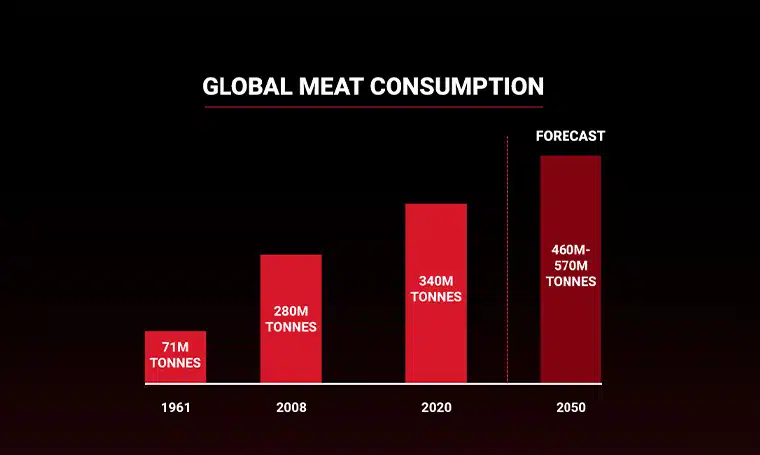
Consuming lamb can pose some health concerns due to its high saturated fat content. Saturated fats can raise blood cholesterol levels and increase the risk of heart disease. Lamb tends to have a higher fat content compared to chicken, making it a less heart-healthy choice. Additionally, lamb consumption has been associated with an increased risk of metabolic syndrome, a cluster of conditions that can increase the likelihood of developing heart disease, stroke, and diabetes. Therefore, individuals concerned about their heart health should limit their intake of lamb and opt for leaner protein sources like chicken.
High Saturated Fat Content
Lamb tends to have a higher saturated fat content compared to chicken, which can be a cause for concern when it comes to maintaining heart health. Saturated fats have been linked to an increase in blood cholesterol levels and a higher risk of cardiovascular diseases. When consumed in excess, these fats can contribute to the development of plaque in the arteries and increase the likelihood of heart attacks and strokes. Therefore, individuals who are mindful of their heart health should limit their consumption of lamb and opt for leaner protein sources like chicken.
Impact On Heart Health And Cholesterol Levels
Consuming lamb, which has a higher saturated fat content compared to chicken, can have a negative impact on heart health and cholesterol levels. Saturated fats contribute to an increase in blood cholesterol levels and are linked to a greater risk of cardiovascular diseases, including heart attacks and strokes. Therefore, individuals concerned about maintaining a healthy heart should limit their consumption of lamb and opt for leaner protein sources like chicken. By choosing chicken over lamb, they can lower their intake of saturated fats and promote better heart health.
Culinary Versatility Of Chicken And Lamb
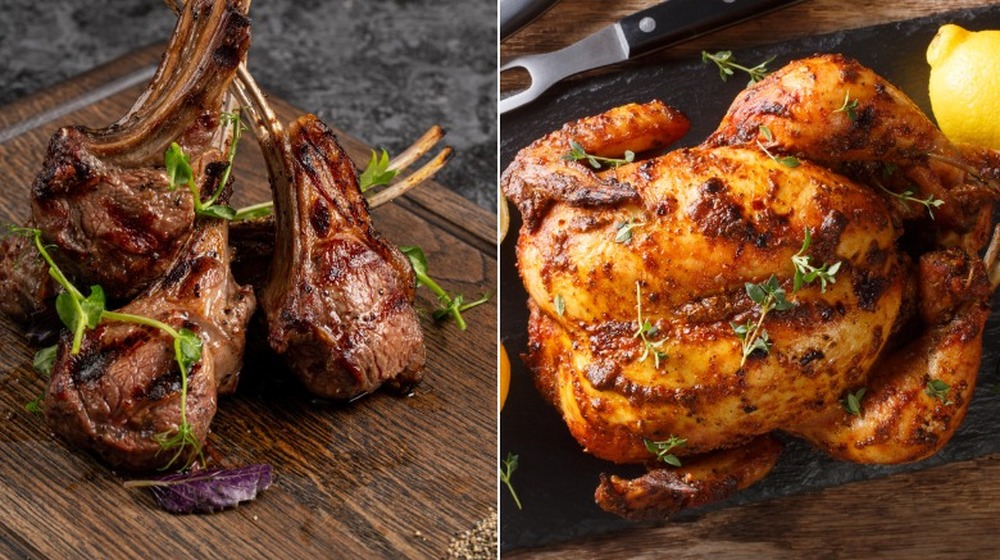
Chicken and lamb are both highly versatile meats in the culinary world. Chicken is known for its ability to take on various flavors and can be cooked using a wide range of methods such as grilling, baking, stir-frying, and roasting. It is a staple in many cuisines around the world, including Italian, Asian, and Mexican. On the other hand, lamb has a distinct and robust flavor that pairs well with bold herbs and spices. It is commonly used in Mediterranean and Middle Eastern cuisines, where it is often roasted, grilled, or used in stews and curries. Whether you’re looking for a mild and adaptable protein or a more robust and flavorful option, both chicken and lamb offer plenty of culinary possibilities.
Popular Cooking Methods For Chicken And Lamb
Chicken and lamb lend themselves to a wide range of cooking methods that bring out their unique flavors and textures. For chicken, popular cooking methods include grilling, baking, frying, and roasting. Grilling chicken imparts a smoky flavor and crispy skin, while baking keeps the meat tender and juicy. Frying chicken creates a crispy exterior and moist interior. Roasting chicken allows for even cooking and deliciously golden skin. On the other hand, lamb is often slow-cooked or roasted to enhance its tenderness and develop rich flavors. Slow-cooking lamb in stews or curries allows the meat to become tender and absorb the flavors of the spices. Roasting lamb results in a succulent and flavorful dish, especially when paired with herbs like rosemary or mint. Whether you prefer the versatility of chicken or the robustness of lamb, the cooking methods available for both meats ensure that you can create a variety of delicious dishes to suit your taste.
Flavor Profiles And Cuisines Where Chicken And Lamb Are Commonly Used
Chicken and lamb have distinct flavor profiles, which make them popular choices in various cuisines around the world. Chicken has a mild, versatile taste that easily absorbs the flavors of different seasonings and marinades. It is commonly used in dishes from different cuisines, including American, Chinese, Mediterranean, and Indian. Lamb, on the other hand, has a rich and robust flavor that lends itself well to hearty dishes. It is a staple in cuisines from the Middle East, North Africa, and Mediterranean regions, where it is often used in stews, grills, and roasts. The unique flavors of chicken and lamb contribute to the diversity of global culinary traditions.
Environmental Impact Of Chicken And Lamb Production
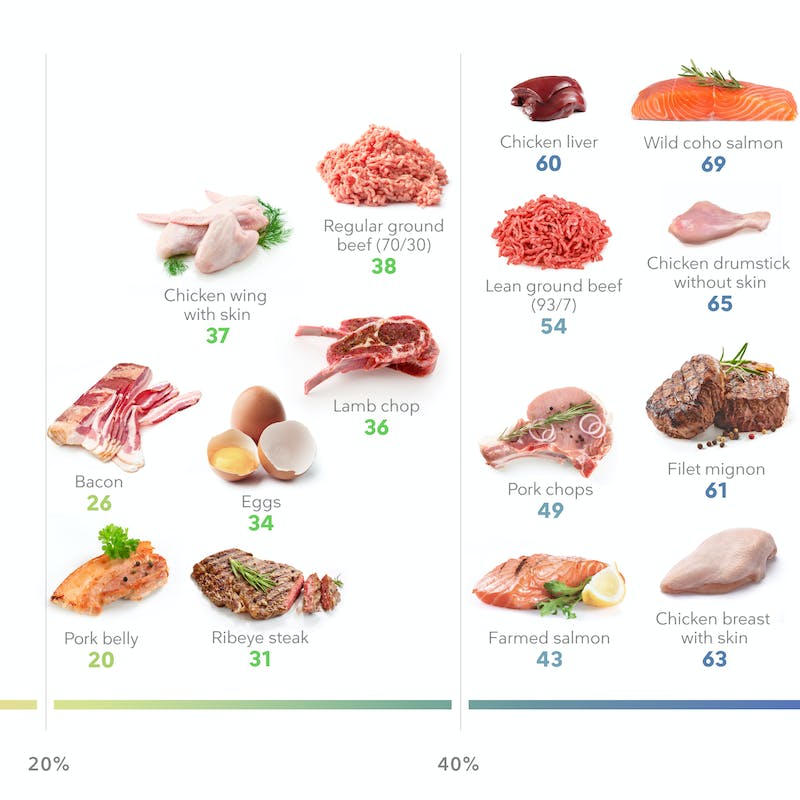
When considering the environmental impact of chicken and lamb production, there are several factors to take into account. Although both chicken and lamb contribute to greenhouse gas emissions, the carbon footprint of beef and lamb is significantly higher compared to chicken. According to the Environmental Working Group (EWG), producing 1 pound of lamb produces more emissions than the same serving of beef. Additionally, raising livestock, including lamb, requires large amounts of land and water resources. When it comes to sustainability, choosing chicken over lamb can help reduce the overall environmental impact of meat consumption.
Carbon Footprint Comparison
Chicken production has a significantly lower carbon footprint compared to lamb production. Studies have shown that the carbon emissions from producing 1 pound of lamb are higher than the same serving of beef. This is due to several factors, including the methane emissions from ruminant animals like sheep and the amount of land and resources required to raise them. Choosing chicken over lamb can significantly reduce the environmental impact of meat consumption and contribute to a more sustainable food system. Let’s take a closer look at the water usage and land requirements for raising chicken versus lamb.
Water Usage And Land Requirements For Raising Chicken Versus Lamb
When it comes to water usage and land requirements, raising chickens requires significantly less water and land compared to lamb. This is because chickens are smaller animals and require less space to raise. They also have a more efficient feed conversion rate, meaning they require less food and water to produce the same amount of meat. On the other hand, lamb production requires more land and water due to the larger size of the animals and their longer grazing periods. By choosing chicken over lamb, individuals can contribute to conserving water resources and reducing the need for large expanses of land for animal farming.
Conclusion

In conclusion, the choice between chicken and lamb depends on various factors such as nutritional needs, health benefits, culinary preferences, and environmental considerations. Chicken serves as a lean protein source with lower fat content and cholesterol levels compared to lamb. It offers versatility in cooking methods and is commonly used in various cuisines. On the other hand, lamb provides important nutrients like iron and vitamin B12. However, lamb production has a higher carbon footprint and requires more water and land compared to chicken. Ultimately, individuals should make an informed decision based on their specific requirements and values.
Summary Of Key Differences Between Chicken And Lamb
Chicken and lamb differ in several key aspects. Chicken is poultry meat, featuring a milder flavor and white color, while lamb is red meat, with a richer taste. In terms of nutrition, chicken is lower in fat and cholesterol compared to lamb. Chicken is also a lean protein source, making it beneficial for weight management and cardiovascular health. Conversely, lamb contains important nutrients like iron and vitamin B12. Environmental considerations also come into play, with chicken production having a lower carbon footprint compared to lamb. In conclusion, individuals should consider their preferences and nutritional needs when choosing between chicken and lamb.
Considerations For Making A Choice Between Poultry And Red Meat.
When deciding between poultry and red meat, there are a few considerations to keep in mind. Firstly, personal preference plays a significant role. Some individuals may prefer the milder flavor and versatility of chicken, while others may enjoy the richness of lamb.
It is also important to consider dietary needs and health goals. For those looking for a lean protein option, chicken is a great choice. On the other hand, lamb provides important nutrients such as iron and vitamin B12.
Additionally, environmental factors should be considered. Chicken production typically has a lower carbon footprint compared to lamb, making it a more sustainable option.
In conclusion, when choosing between poultry and red meat, individuals should consider their taste preferences, nutritional needs, and environmental impact.
FAQ About Chicken Vs Lamb: Poultry Vs Red Meat
Q: What are the main differences between chicken and lamb?
A: Chicken is considered poultry, while lamb is classified as red meat. Chicken has a lighter flavor and lower fat content compared to the richer taste of lamb.
Q: Is one healthier than the other?
A: Chicken is generally lower in fat and calories than lamb, making it a leaner option. However, both can be part of a healthy diet when consumed in moderation and prepared in a healthy manner.
Q: Which one is better for weight loss?
A: Chicken is often recommended for weight loss due to its lower calorie and fat content. However, both chicken and lamb can be included in a balanced weight loss diet depending on portion sizes and preparation methods.
Q: What about nutritional value?
A: Chicken is a good source of lean protein and various vitamins and minerals such as B vitamins and selenium. Lamb contains more iron and zinc compared to chicken but is also higher in saturated fat.
Q: Are there any cultural or dietary preferences associated with chicken or lamb?
A: Chicken is a popular protein choice in many cultures around the world, while lamb is more commonly consumed in certain regions or during specific occasions. Dietary preferences may vary based on personal taste and cultural traditions.
Q: How can I choose between chicken and lamb when cooking or dining out?
A: Consider your taste preferences, nutritional goals, and cooking methods when deciding between chicken and lamb. Both can be delicious and nutritious choices depending on how they are prepared and enjoyed.

The Bird ‘n’ Bike Cafe ‘n’ Bar is a charming establishment nestled in the heart of Chiltern, Victoria, where locals and visitors alike come together to enjoy delicious food, great company, and a warm, welcoming atmosphere. With 1187 likes and 136 check-ins, it’s clear that the Bird ‘n’ Bike has captured the hearts of many. Our cafe and Bar is open from Wednesday to Sunday, inviting guests to start their day with us from 8 am to 2:30 pm. Whether you prefer to dine in and savor the cozy ambiance or grab a delicious meal, we’ve got you covered.